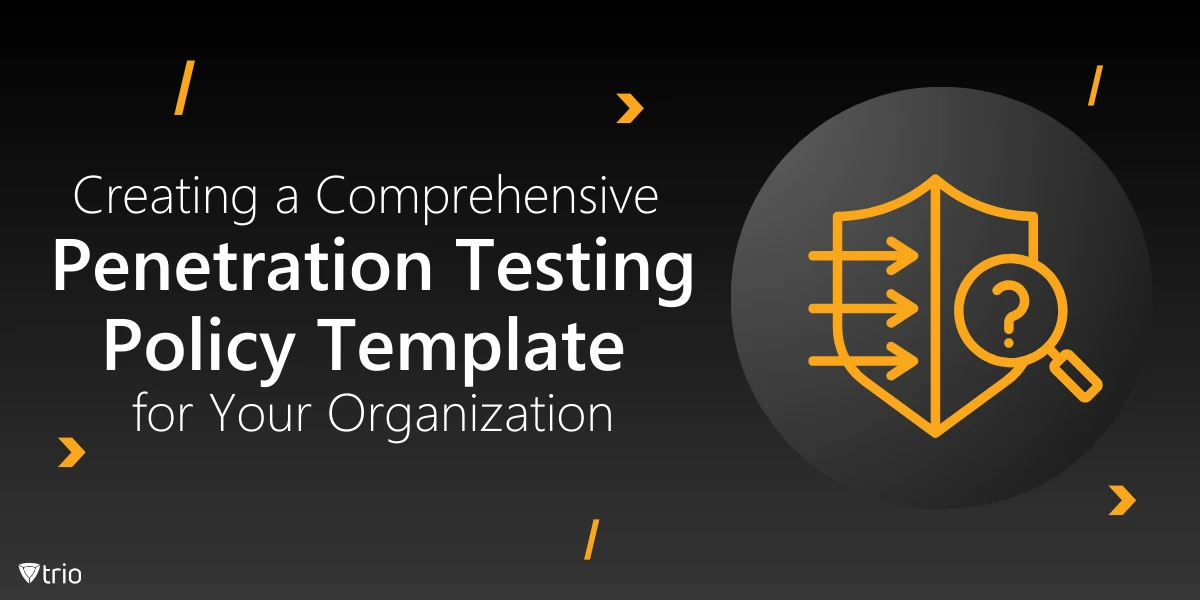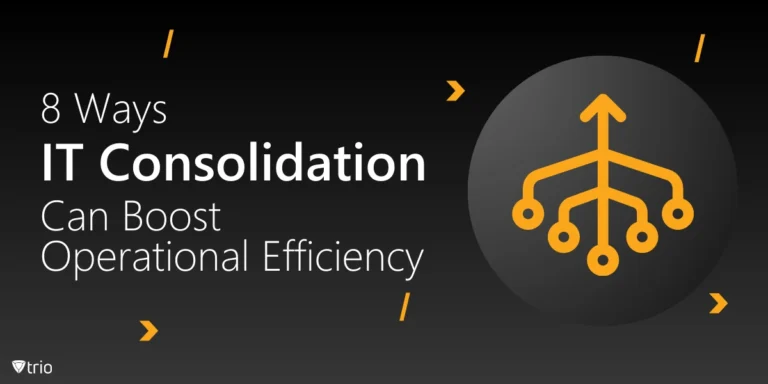In today’s ever-evolving digital landscape, organizations are more vulnerable than ever to cyber threats. As businesses expand their digital footprint, they also widen the array of potential targets for cyberattacks. A proactive approach to identifying and mitigating these risks is essential, and one effective way to do this is through penetration testing. To standardize and streamline this process, it’s crucial to establish a penetration testing policy template. In this post, we’ll discuss the importance of a penetration testing policy, walk through key components of a penetration testing policy template, and provide guidance on how to create one for your organization.
What is a Penetration Testing Policy?
A penetration testing policy, not to be confused with vulnerability assessments, outlines an organization’s procedures, objectives, and guidelines for conducting penetration testing on its systems and networks. These tests simulate cyberattacks on a company’s infrastructure to identify vulnerabilities that could be exploited by malicious actors. By codifying penetration testing activities in a formal policy, organizations can ensure consistency, transparency, and regulatory compliance while safeguarding sensitive data.
A company’s penetration testing policy should include details about the frequency and scope of testing, define the roles and responsibilities of individuals involved, and set boundaries to ensure that testing activities do not disrupt normal business operations. Additionally, it provides guidance on reporting, risk assessment, and remediation processes. In the case of external penetration testing, meaning that it is outsourced to a different company, a policy is still important though it is critically vital for internal penetration testing.
Benefits of Implementing a Penetration Testing Policy
Creating and enforcing a penetration testing policy offers numerous benefits, including:
- Improved Security: Using regular penetration testing services uncovers weaknesses in an organization’s security infrastructure, allowing for timely remediation.
- Regulatory Compliance: Many regulatory frameworks and industry standards, such as PCI-DSS, HIPAA, and GDPR, require periodic penetration testing as part of compliance.
- Risk Management: By identifying and addressing vulnerabilities, organizations can minimize the risk of data breaches and cyberattacks.
- Streamlined Testing Process: A formal policy ensures that penetration tests are carried out consistently and efficiently, without disrupting daily operations.
- Clear Communication: Setting policies for network penetration testing defines the responsibilities of all parties involved, including internal teams and external testers, fostering effective communication and accountability.

Essential Components of a Penetration Testing Policy Template
To create a comprehensive and effective penetration testing policy, it’s important to include specific sections. Here are the essential components of a penetration testing policy template:
1. Purpose and Scope
- Purpose: Clearly state the purpose of the policy, such as safeguarding the organization’s digital assets, ensuring compliance, and identifying vulnerabilities. This section should explain why penetration testing is important for the organization and how it aligns with overall security goals.
- Scope: Define which systems, networks, and applications will be included in penetration testing. Specify if certain environments, such as production, development, or staging, are covered. Also, mention any exclusions, such as certain systems that may be too sensitive for testing.
2. Roles and Responsibilities
- Internal Stakeholders: List the roles and responsibilities of internal personnel involved in the testing process, such as the IT security team, compliance officers, and management. Make it clear who is authorized to initiate, oversee, and evaluate the results of penetration testing.
- External Testers: If third-party testers are involved, outline their roles, responsibilities, and access permissions. Include any contractual requirements, such as non-disclosure agreements (NDAs), to ensure data confidentiality.
- Incident Response Team: Specify the role of the incident response team in case the penetration test inadvertently triggers an actual security incident. Ensure that team members are aware of how to handle such situations.
3. Testing Methodology
- Types of Testing: Detail the types of penetration testing the organization will conduct, such as network, web application, mobile application, or wireless network testing. Specify whether tests will be black-box, white-box, or gray-box.
- Tools and Techniques: List the approved tools and techniques that can be used during testing. This could include scanning tools, exploitation frameworks, and manual testing techniques.
- Phases of Testing: Describe the phases of the penetration testing process, including:
- Planning and Reconnaissance: Collecting information about the target environment.
- Scanning: Using tools to identify potential vulnerabilities.
- Exploitation: Attempting to exploit identified vulnerabilities to gain unauthorized access.
- Reporting: Documenting findings and recommendations for remediation.
4. Authorization and Communication
- Authorization: Specify the process for authorizing penetration testing activities. This may involve obtaining written consent from system owners or senior management. Authorization procedures help avoid potential legal and operational issues that may arise if unauthorized testing occurs.
- Communication Protocols: Define how communication will be handled during the testing process, especially if a third-party vendor is conducting the test. Establish a communication plan for informing internal stakeholders of testing schedules, progress updates, and any critical findings that require immediate attention.
5. Testing Frequency and Schedule
- Frequency: Specify the frequency of penetration testing, such as annually, biannually, or in response to major changes in the IT environment. This may vary based on compliance requirements, business needs, and risk assessments.
- Scheduling: Provide guidelines for scheduling penetration tests to minimize disruption. Specify if tests should be conducted during off-peak hours, weekends, or other times to avoid affecting normal business operations.
6. Reporting and Documentation
- Report Contents: Outline the structure and required contents of the penetration testing report. This typically includes an executive summary, detailed findings, risk ratings, recommendations, and remediation timelines.
- Documentation Requirements: Specify what documentation must be kept on file, such as authorization forms, test logs, and remediation plans. Ensure that documentation aligns with compliance and auditing requirements.
- Distribution: Define who will receive copies of the penetration testing report and ensure that sensitive information is shared only with authorized personnel.
7. Risk Assessment and Remediation
- Risk Rating: Establish a risk rating system to categorize the severity of identified vulnerabilities. This can be done using a numerical scale, such as low, medium, high, and critical, or through a qualitative assessment.
- Remediation Process: Outline the steps for addressing vulnerabilities identified during testing. Specify timelines for remediation based on risk ratings and identify the teams responsible for implementing fixes.
- Post-Remediation Testing: Include provisions for retesting to ensure that vulnerabilities have been successfully mitigated. This is particularly important for critical findings.
8. Compliance and Legal Considerations
- Regulatory Compliance: List any regulatory frameworks that the policy must adhere to, such as GDPR, HIPAA, PCI-DSS, or SOX. Outline how the policy supports compliance with these frameworks.
- Legal Requirements: Detail any legal obligations, such as obtaining permission before testing or adhering to data privacy laws. This section helps mitigate potential legal risks associated with penetration testing.
Penetration Testing Policy Template Free Download
Developing a robust Penetration Testing Policy is a proactive step towards identifying and mitigating vulnerabilities within your IT environment. By following a structured framework, your organization can protect sensitive information, stay compliant, and respond to emerging threats with agility. Check out our penetration testing policy template to get you started.
See Trio in Action: Get Your Free Trial Now!
For organizations looking to streamline and manage their penetration testing efforts, Trio’s Mobile Device Management (MDM) platform offers a powerful solution. Trio not only helps manage devices but also integrates security features that complement penetration testing activities. Trio can enforce policies, track security incidents, and streamline device management, making it easier for organizations to maintain a strong security posture. Try Trio today and take the first step in safeguarding your digital environment. Start your free trial now!




